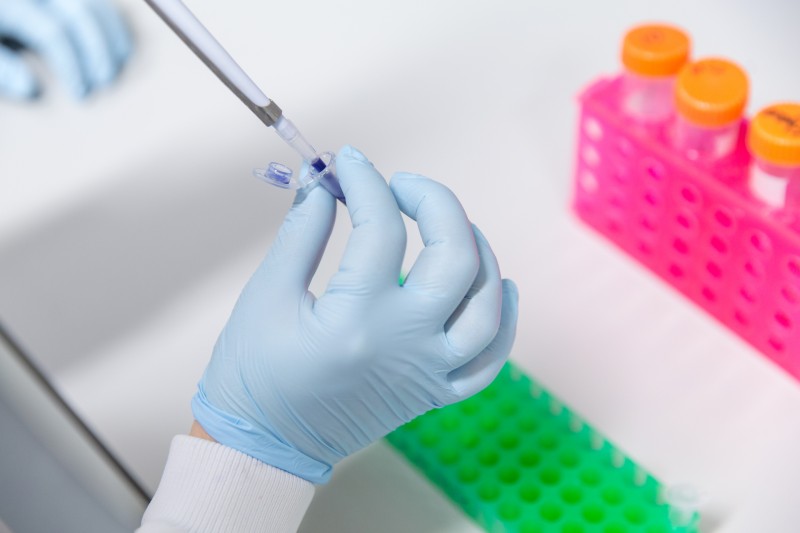By Sophie Arthur
April 24, 2020
Time to read: 2 minutes
Group Head Michelle Percharde and Facility Head Laurence Game recently donated their quantitative PCR machines to Public Health England labs. They have been sent to the new testing facility set up in Milton Keynes for volunteers to use when testing COVID-19 swabs for the presence of the virus. But how will these machines help?
How will these machines be used to help with COVID-19 testing?
Polymerase chain reaction (PCR) is a technique routinely used in medical research labs. This is also the technique volunteers are using to test for new coronavirus cases in the UK. These swab or antigen tests tell the patient if they have the virus right now by detecting any virus RNA present.

Swabs are taken and those samples are sent to the lab. Scientists then extract the RNA – the virus’ genetic information – from the sample before it is converted into the more stable DNA form. Then the DNA is mixed with small molecules called primers. These are short DNA sequences that are designed to bind to specific sections of, in this case, coronavirus RNA. It then goes through multiple cycles of heating and cooling to create multiple copies of the DNA. These heating and cooling cycles allow the two DNA strands to come apart and allow those primers to bind and act as a template for a new complete DNA molecule to be synthesised. Each cycle means there is a doubling of the number of DNA molecules in theory.
Fluorescent dye molecules then get incorporated in each cycle as the virus DNA is multiplied. So, if the virus RNA is present, the fluorescence grows and is detected over a certain level. A sample without any virus RNA means there is nothing for the primers to stick to and nothing to copy so there is no fluorescence signal above the limit. A test over the threshold means that person is positive for coronavirus.
The machines that are colleagues have donated to the fight against coronavirus will mean that more volunteers working at the testing centre can perform more tests each day.